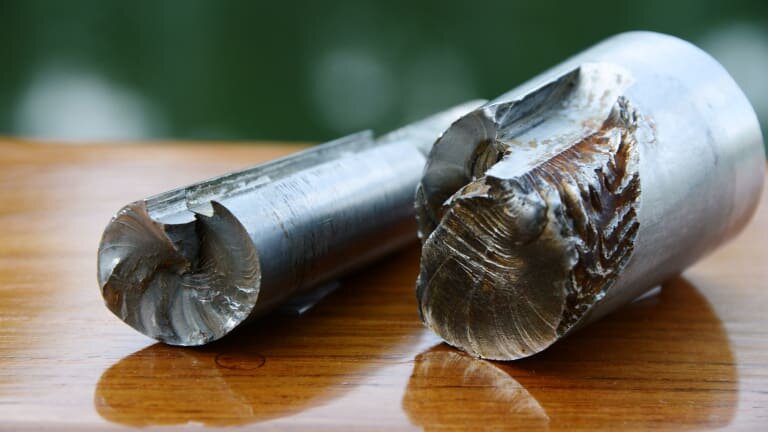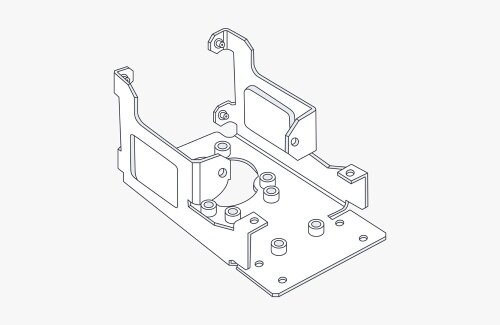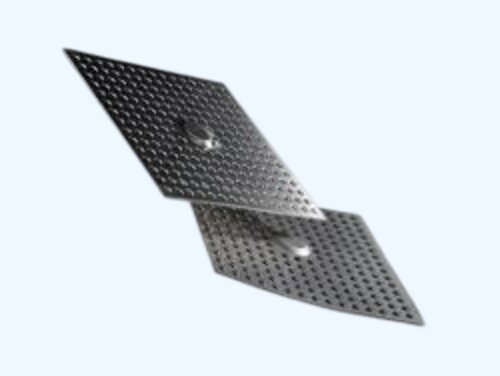Battery enclosures protect energy systems from heat, vibration, and harsh environments. They also ensure electrical safety and consistent performance across years of operation.
As industries adopt electric mobility, renewable energy, and smart devices, the durability of enclosures has become increasingly essential. The challenge lies in combining strength, weight efficiency, and manufacturability without sacrificing safety or compliance.
This article examines how thoughtful design, material selection, and process control result in enclosures that endure over time and withstand stress.

What Makes a Battery Enclosure Durable?
A durable enclosure starts with wise engineering choices. These fundamentals determine how well it withstands stress, heat, and the elements over the years of operation.
Durability depends on how the design handles mechanical, thermal, and environmental challenges. A strong enclosure must resist deformation, seal against moisture, and effectively manage heat.
The design goals often include:
- Mechanical strength to withstand vibration, drops, and pressure.
- Environmental protection against dust, water, and corrosive elements.
- Thermal control for safe and efficient operation.
- Serviceability to enable easy maintenance and part replacement.
Studies show that 70% of a product’s reliability and cost are determined during the design stage. Choices made early—such as wall thickness, joint style, or vent placement—determine how the enclosure performs and ages.
Material Selection and Structural Design
Choosing the right material is the foundation of reliability. Each option alters weight, corrosion resistance, and the structure’s ability to handle real-world loads.
Material defines both the performance and manufacturability of a battery enclosure.
- Aluminum alloys (5052, 6061): Lightweight, corrosion-resistant, and easy to form. Common in outdoor cabinets and EV modules.
- Stainless steel (304, 316): Strong and rustproof, ideal for harsh or marine environments but heavier and more costly.
- Carbon steel: Affordable and easy to fabricate, suitable for indoor units with protective coating.
- Engineering plastics (ABS, PC, PA): Light and insulating, but need reinforcements to prevent deformation.
Hybrid designs—combining a metal frame with plastic covers—strike a balance between rigidity, insulation, and weight reduction. The metal base provides structure and grounding, while the plastic shell improves handling and aesthetics.
Design Tip: Match material to environment.
Indoor systems can use coated steel or aluminum. Outdoor or high-humidity systems need stainless steel or anodized aluminum. In chemical environments, reinforced plastics such as polycarbonate or nylon last longer.
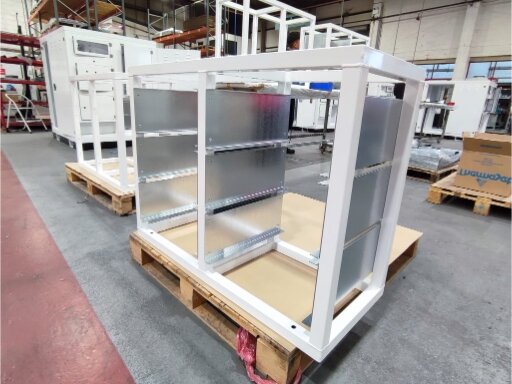
Balancing Strength, Thickness, and Weight
True strength comes from geometry, not just heavy sheets. A proper balance reduces costs, eases production, and maintains enclosures’ stability under stress.
Adding thickness often raises cost and weight without significant strength gains. A 1 mm increase can raise total weight by up to 10%, yet improve stiffness by less than 3%.
Instead of thicker sheets, engineers can:
- Add formed ribs or stiffening flanges for rigidity.
- Reinforce corners and high-stress zones with internal brackets.
- Use finite element analysis (FEA) to find stress concentration points.
Design Tip: Use the minimum sheet thickness that meets performance needs. For aluminum, 2–3 mm is often enough. For mild steel, a thickness of 1.5–2 mm strikes a balance between strength and cost.
Reducing unnecessary weight improves heat dissipation, handling, and welding efficiency.
Thermal Management and Ventilation Design
Heat silently shortens battery life. Effective thermal design controls temperature and prevents failures without sacrificing protection or sealing.
Every 10 °C rise above the rated temperature can reduce battery life by 30–40%. Enclosure design must direct heat away from cells while keeping contaminants out.
Thermal management methods include:
- Passive cooling: Heat sinks, fins, or natural airflow through vent openings.
- Active cooling: Fans or liquid channels for high-energy systems.
- Thermal interface materials (TIMs): Silicone pads or graphite sheets to improve heat conduction.
Airflow design is as critical as sealing. Louvers, filters, and labyrinth seals maintain airflow while blocking water and dust.
Design Tip: Place vents high and angled to avoid water entry. For outdoor use, add drip shields or downward-facing louvers.
Standard Error: Over-sealing for waterproofing and trapping heat. Always verify designs with thermal simulation or real-load testing.
Safety and Compliance Planning
Safety isn’t an afterthought—it defines every design decision. Meeting standards early ensures dependable performance and smooth certification later.
Battery enclosures must protect users, technicians, and nearby systems from electrical and mechanical hazards. This includes:
- Impact resistance and shock absorption during transport and operation.
- Electrical isolation between live parts and housing.
- Thermal propagation barriers to limit cell failure spread.
- Grounding and bonding paths for consistent electrical continuity.
Standards such as UN 38.3, IEC 62133, and UL 1642 guide testing for mechanical and electrical safety. IP and NEMA ratings define the levels of protection against dust and water.
Design Tip: Reserve clear space for compliance labels, inspection points, and safety markings. This simplifies testing, documentation, and future audits.
Sealing and Environmental Protection
The outside world tests every joint and seam. A good sealing design prevents dust, water, and corrosion from reducing service life.
Battery enclosures are exposed to harsh outdoor conditions, including rain, dust, salt air, and constant vibration.
Adequate environmental protection depends on the right combination of sealing level, material compatibility, and assembly accuracy. Poor sealing not only allows moisture to enter but also accelerates corrosion and electrical failures.
IP and NEMA Ratings as Design Targets
The required sealing level depends on the working environment.
- IP Ratings (Ingress Protection) classify protection against solids and liquids. IP54 suits indoor setups; IP67 or IP68 protects against immersion.
- NEMA Ratings are used in North America and cover impact, corrosion, and dust protection.
For outdoor energy systems or marine environments, choose IP66–IP68 or NEMA 4X.
Indoor systems typically perform well with IP54 or NEMA 12 ratings. Over-specifying protection increases cost and complicates heat control—so it’s better to design to actual use conditions.
Sealing Techniques for Sheet Metal Enclosures
The success of sealing depends on clean surfaces, precise bending, and tight joints.
- Continuous TIG or MIG Welding: Creates a watertight seam and excellent strength for stainless steel or aluminum housings.
- Spot Welding + Sealant: Efficient for production lines. Gaps are filled with silicone or epoxy to prevent leaks.
- Gasket Sealing: Rubber or silicone gaskets between covers and flanges allow reassembly while maintaining IP protection.
- Compression Latches: Apply even pressure on gaskets, improving sealing and vibration resistance.
Material compatibility is crucial—soft or non-resistant gaskets can degrade quickly.
EPDM and silicone rubber are common because they remain elastic over a wide temperature range.
Design Tip: Design flat, continuous flange surfaces with grooves to hold gaskets in place.
Standard Error: Using gaskets that are too thick or soft, which compress unevenly and cause leaks after multiple openings.

Corrosion Resistance and Surface Finishing
Finishes guard against oxidation, scratches, and wear. The proper surface treatment preserves both function and appearance in demanding environments.
Even sealed enclosures are exposed to humidity, chemical vapors, or UV radiation. Over time, these factors can attack the coating and weaken the structure. Surface finishing creates a durable barrier that prevents corrosion and extends service life.
Metal Surface Treatments
Each metal type requires different protection methods:
- Aluminum: Anodizing builds a hard oxide layer (15–25 µm thick) for corrosion and wear resistance.
- Stainless Steel: Passivation removes contaminants, forming a clean chromium oxide film that prevents rust from forming.
- Carbon Steel: Powder coating, zinc plating, or hot-dip galvanizing adds long-lasting protection. A zinc layer of 8–12 µm typically resists salt spray tests for 500–800 hours.
Plastic and Composite Finishes
For plastic components, UV-resistant materials or coatings prevent fading and cracking. Adding carbon black or UV absorbers helps retain surface strength in outdoor environments. If the design incorporates both metal and plastic parts, ensure coating compatibility to prevent galvanic corrosion where the materials meet.
Design Tip: Always include finish type and thickness in engineering drawings and purchase orders.
A consistent coating specification ensures predictable corrosion resistance and avoids fit problems during assembly.
Drainage and Moisture Control
Outside sources don’t always cause water ingress—it can also form inside. Condensation appears when temperature and humidity fluctuate, especially in outdoor installations.
To prevent internal corrosion or short circuits:
- Add drain holes with protective covers or mesh at the enclosure’s lowest point.
- Use breather valves that equalize pressure but block water and dust.
- Include desiccant packs for enclosures stored or shipped in humid conditions.
Design Tip: Place breather valves away from areas prone to splash.
Standard Error: Ignoring condensation, which leads to corrosion or false readings in sensors and BMS units.
Internal Layout and Assembly Design
The inside structure matters just as much as the shell. Organized mounting and cable paths prevent vibration damage and simplify maintenance.
Support and Mounting Structures
Internal supports hold cells, circuit boards, and connectors securely in place.
- Brackets and Trays: Prevent cell movement and protect wiring during transport.
- Cushion Pads: Absorb shock to reduce vibration damage.
- Guide Rails or Frames: Maintain alignment for easy assembly and service.
In larger housings, use partition walls or cross-braces to share loads and prevent panel warping.
Cable Management and Safety Clearance
Power and signal lines should follow separate paths to reduce interference.
- Maintain clearance between high-voltage and control circuits to prevent electrical hazards.
- Add strain reliefs and locking connectors to prevent wire pullout.
- Route cables away from sharp edges and weld seams to prevent damage.
Proper cable organization makes assembly faster and lowers repair risks later.
Ease of Assembly and Maintenance
Durability includes serviceability. A design that’s easy to open and reseal prevents damage during maintenance.
- Removable panels allow access without disturbing other seals.
- Hinged doors save time for inspection or battery replacement.
- Modular subassemblies let technicians replace faulty components without disassembling the entire box.
Design Tip: Use captive screws, clear access handles, and alignment tabs.
They simplify field maintenance and ensure consistent sealing after reassembly.
Integration of Safety and Ergonomics
A safe enclosure to use is more reliable over time. Ergonomic design reduces operator fatigue and maintenance errors.
- Add rounded edges and deburring to prevent injuries.
- Design handles and lifting points that support safe manual handling.
- Use safety colors and clearly visible labels for grounding, high-voltage, or fire warnings.
- Include lockable panels to prevent unauthorized access.
Attention to ergonomics enhances usability and reflects a disciplined engineering approach.
How to Fabricate a Battery Enclosure?
Fabrication transforms a design concept into a precise, functional structure. The process you choose—sheet metal forming or extrusion—depends on the enclosure’s size, strength, and environmental requirements.
Sheet Metal Fabrication for Battery Enclosures
Sheet metal fabrication remains the most versatile and widely used method for custom battery housings. It’s ideal for small to large enclosures that require design flexibility, high strength, and fast production.
The process starts with laser cutting or CNC punching to form panels from steel, aluminum, or stainless steel sheets. Next, press brake bending shapes edges and flanges for stiffness and alignment. TIG or MIG welding joins the panels, creating a sealed structure that resists vibration and water ingress.
After welding, surfaces are cleaned, treated, and coated—often through powder coating, anodizing, or galvanizing—to enhance corrosion resistance. Hardware such as hinges, gaskets, and handles is then installed for assembly.
Advantages:
- Flexible design for prototypes and low to mid-volume production.
- Excellent strength-to-weight ratio.
- Compatible with IP-rated sealing and thermal management systems.
Applications:
- Energy storage systems, EV battery modules, industrial power cabinets, and outdoor enclosures.
Design Tip: Add internal stiffeners or flanged corners to strengthen large panels without adding thickness or weight.
Extruding for Battery Enclosures
Extrusion is ideal for enclosures that require a uniform cross-section and a smooth, continuous structure—often used for compact, lightweight battery packs.
In this method, aluminum billets are heated and then pushed through a precision die to form the desired profiles. These profiles are then cut to length, machined for ports or connectors, and assembled with end covers.
Extruded enclosures often feature snap-fit or screw-on covers, ensuring both strength and serviceability without the need for welding.
Advantages:
- Excellent dimensional accuracy and heat dissipation.
- Lightweight structure with fewer joints.
- Lower machining cost for high-volume production.
Applications:
- EV battery modules, portable devices, drones, and communication equipment.
Design Tip: Combine extrusion with CNC machining for improved tolerance control and a superior aesthetic finish. For high IP protection, use silicone gaskets and precision-fit covers.
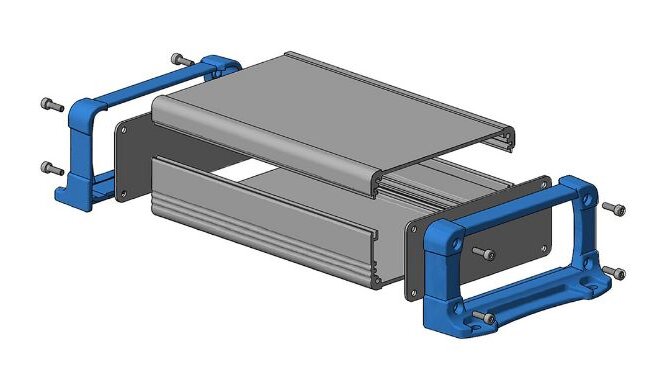
In-Process Testing and Validation
Quality must be verified at each stage. In-process testing confirms sealing, alignment, and performance before the enclosure is removed from the line.
Testing catches minor problems before they become significant issues.
- Leak testing confirms the air or water-tightness of a seal after installation.
- Vibration testing ensures joints hold under dynamic loads.
- Grounding checks verify continuity after painting.
- Dimensional inspection ensures parts fit ideally during assembly.
Collecting this data builds a record of reliability for every product. Modern shops utilize sensors and digital measurement systems to provide real-time feedback, ensuring that every enclosure meets its design intent.
Conclusion
Durability comes from control of design, materials, and validation. Testing proves what the factory promises, ensuring that every battery enclosure can resist heat, vibration, and corrosion in real-world use.
When design, fabrication, and testing align, manufacturers deliver not just metal boxes but trusted, long-life protection for the energy systems of tomorrow.
At Shengen, we specialize in designing and fabricating custom sheet metal battery enclosures built for strength, safety, and precision. Upload your CAD file for a free design review. Request a fast quote within 24 hours.
Hey, I'm Kevin Lee

For the past 10 years, I’ve been immersed in various forms of sheet metal fabrication, sharing cool insights here from my experiences across diverse workshops.
Get in touch

Kevin Lee
I have over ten years of professional experience in sheet metal fabrication, specializing in laser cutting, bending, welding, and surface treatment techniques. As the Technical Director at Shengen, I am committed to solving complex manufacturing challenges and driving innovation and quality in each project.

